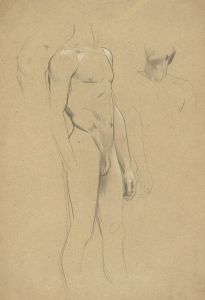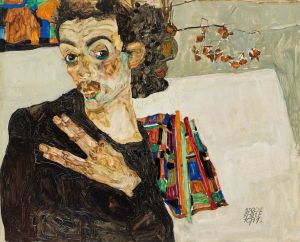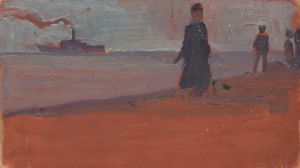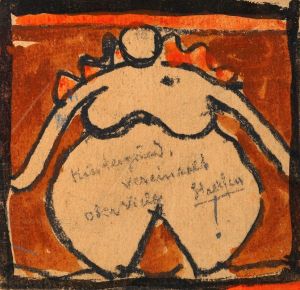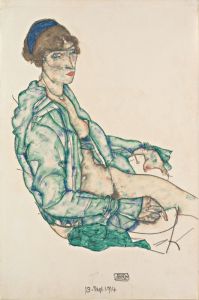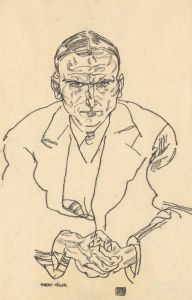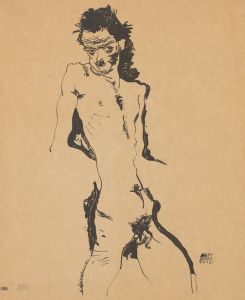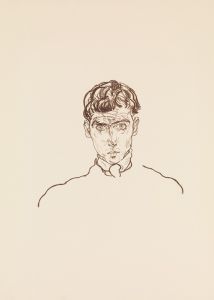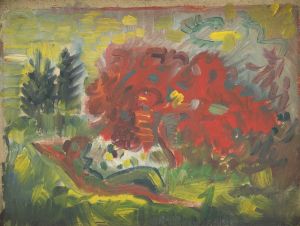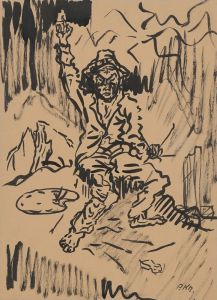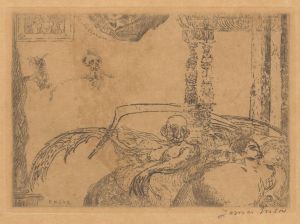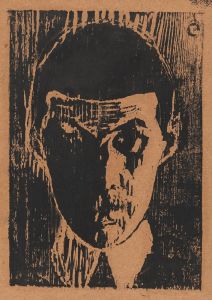
Masturbierendes Mädchen
A hand-painted replica of Egon Schiele’s masterpiece Masturbierendes Mädchen, meticulously crafted by professional artists to capture the true essence of the original. Each piece is created with museum-quality canvas and rare mineral pigments, carefully painted by experienced artists with delicate brushstrokes and rich, layered colors to perfectly recreate the texture of the original artwork. Unlike machine-printed reproductions, this hand-painted version brings the painting to life, infused with the artist’s emotions and skill in every stroke. Whether for personal collection or home decoration, it instantly elevates the artistic atmosphere of any space.
Egon Schiele, an Austrian painter and a protégé of Gustav Klimt, is known for his intense and often provocative works. One of his notable pieces is "Masturbierendes Mädchen" (translated as "Masturbating Girl"), created in 1911. This artwork is a part of Schiele's broader exploration of human sexuality and the human form, which was a central theme throughout his career.
Schiele was born on June 12, 1890, in Tulln, Austria, and he showed an early talent for drawing. He studied at the Vienna Academy of Fine Arts but left after three years due to his dissatisfaction with the conservative teaching methods. Schiele's work is often associated with the Expressionist movement, characterized by its focus on representing emotional experiences rather than physical reality.
"Masturbierendes Mädchen" is a watercolor and pencil on paper, measuring approximately 46.5 x 30.5 cm. The piece depicts a young girl in a moment of private intimacy, rendered with Schiele's distinctive, almost skeletal style. The figure is contorted, with exaggerated limbs and a stark, almost raw portrayal of the human body. Schiele's use of color is minimal but effective, with the pale tones of the girl's skin contrasting sharply against the darker background.
The subject matter of "Masturbierendes Mädchen" was highly controversial at the time of its creation. Early 20th-century Vienna was a place of significant social and cultural change, but it was still bound by conservative attitudes towards sexuality. Schiele's frank depiction of a young girl in a sexual act challenged these norms and provoked strong reactions from the public and critics alike. His work was often seen as scandalous, and he faced legal troubles, including a brief imprisonment in 1912 on charges of producing pornographic material.
Despite the controversy, Schiele's work gained the admiration of several contemporaries and art collectors. His mentor, Gustav Klimt, was particularly supportive, and Schiele's unique style began to attract attention. His exploration of themes such as sexuality, death, and the human psyche resonated with the Expressionist movement's goals, and he became a prominent figure in the art world.
Schiele's life was tragically cut short by the Spanish flu pandemic in 1918, which claimed his life at the age of 28. Despite his brief career, he left behind a significant body of work that continues to be studied and admired for its emotional intensity and technical skill.
"Masturbierendes Mädchen" remains a powerful example of Schiele's ability to confront and depict the complexities of human sexuality. The piece is housed in a private collection, and its provocative nature continues to spark discussions about the boundaries of art and the representation of the human body. Schiele's work, including this piece, is celebrated for its boldness and its unflinching look at the human condition, securing his place as a pivotal figure in the history of modern art.





